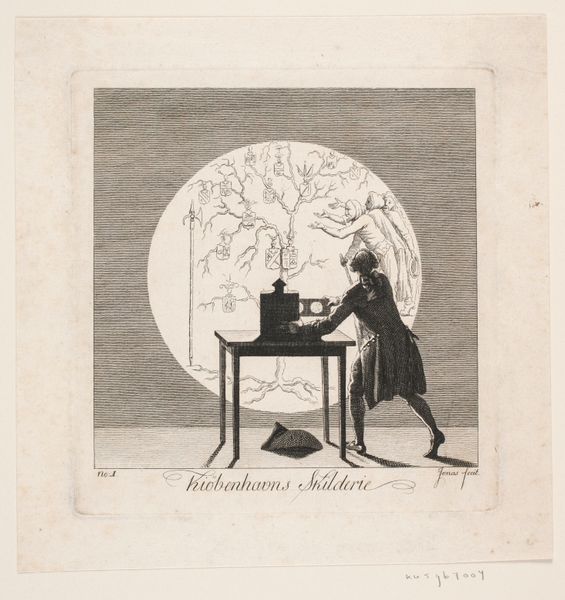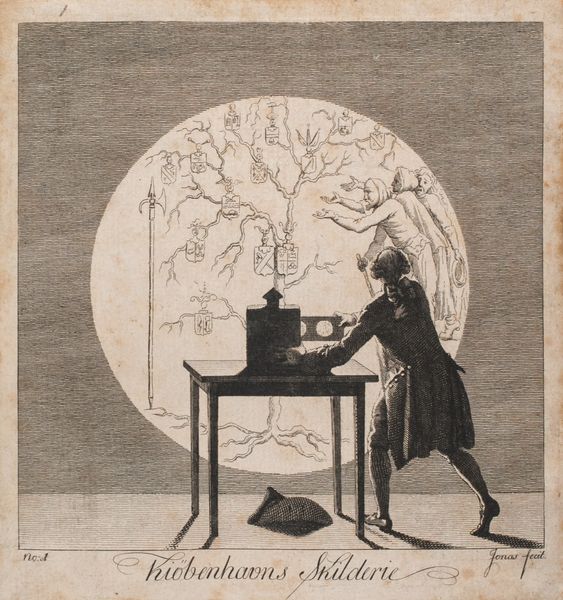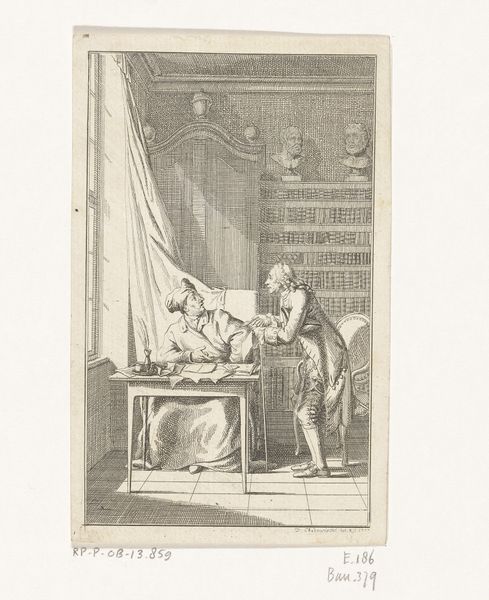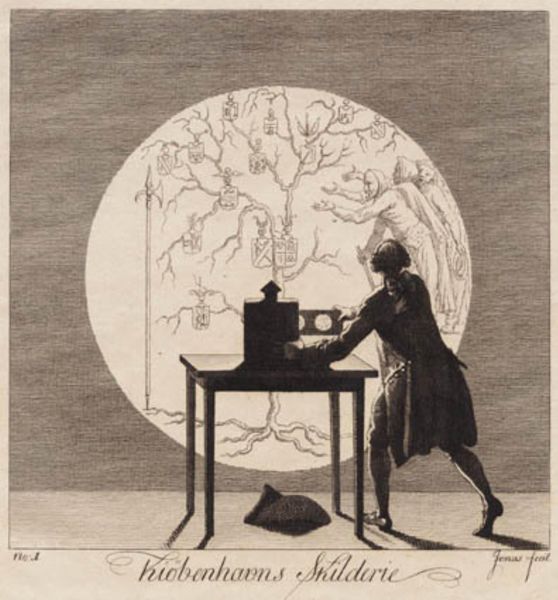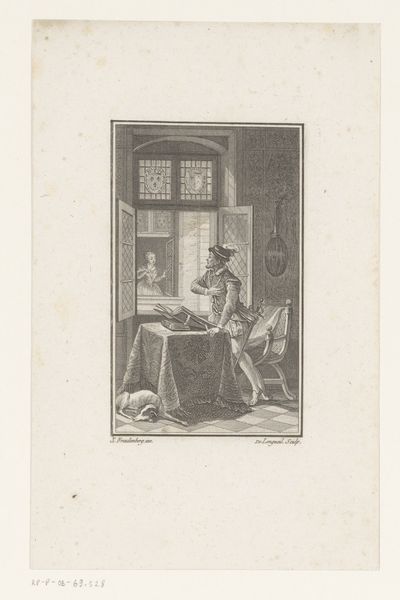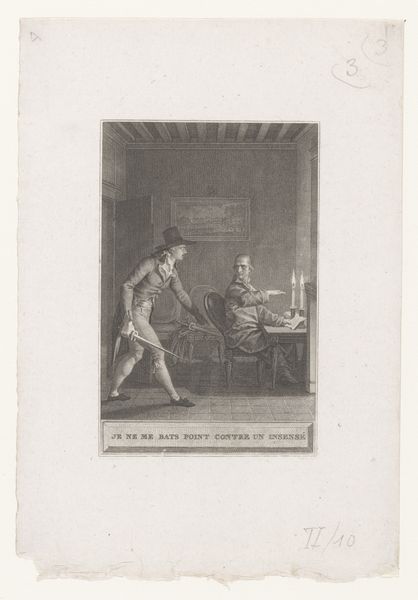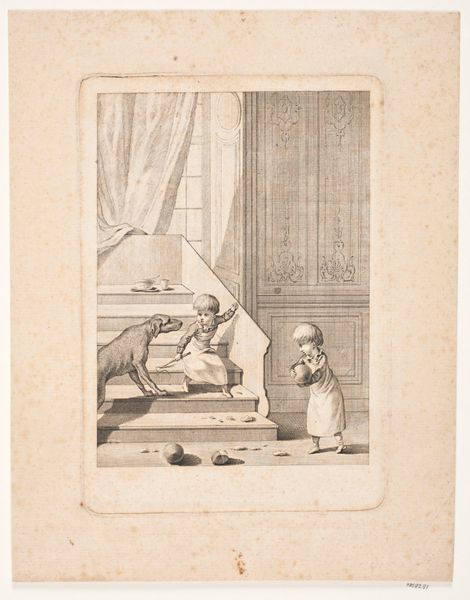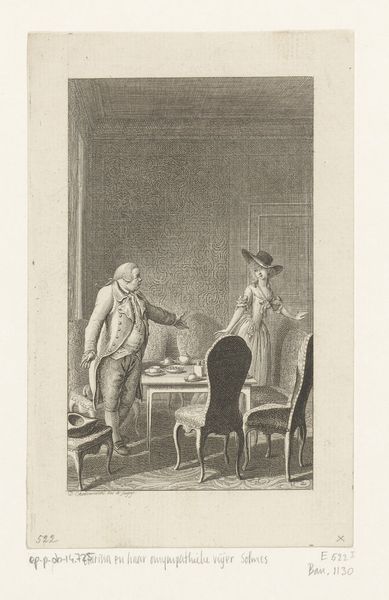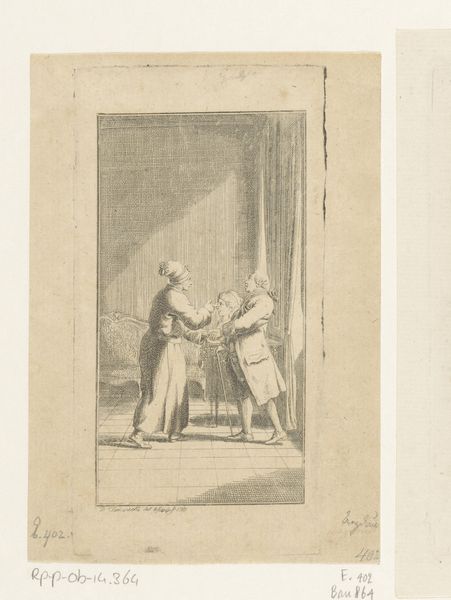
drawing, print, etching, engraving
#
drawing
#
neoclacissism
# print
#
etching
#
cityscape
#
history-painting
#
engraving
Dimensions: 195 mm (height) x 187 mm (width) (bladmaal), 156 mm (height) x 153 mm (width) (Plademål), 133 mm (height) x 136 mm (width) (billedmaal)
Editor: So, this print, "Kiøbenhavns Skilderie", nr. 2, by J.F. Clemens, was made between 1785 and 1788. It’s an etching, engraving, and drawing of a cityscape that depicts what appears to be a magic lantern show. It's intriguing how this everyday entertainment is depicted, and how the labor of one individual facilitates a visual spectacle. What do you see as important about this piece? Curator: As a materialist, I focus on the process itself. Consider the labor involved: the etcher meticulously creating the plate, the printer pulling the impression, and the vendor distributing it. This object connects to broader systems of production and consumption in 18th-century Copenhagen. It shows us not just what they *saw*, but how images were made, shared, and consumed by different social classes. Editor: That’s fascinating! So, instead of just appreciating the image, we should think about who made it, and for whom? Does the material it is made of change the context? Curator: Precisely. Engravings and etchings democratized images. Prints like this were more accessible than paintings, meaning more people had visual access to current events and entertainment. How does this particular "magic lantern" reflect the aspirations or anxieties of the late 1780s in Copenhagen? Are these depictions of theatrical acts or contemporary events? Editor: It's interesting to think of art like this not as some singular masterpiece, but as a widely distributed piece of media. The labor becomes part of the art! Curator: Exactly. By emphasizing its production and consumption, we challenge traditional art history's focus on individual genius, acknowledging how material conditions shape both the making and reception of images. Editor: Thinking about how the art object came to be, the work of the artist and printmaker opens it up to a bigger scope. Thanks, I had not considered art like this. Curator: Indeed, considering the conditions of production always offers fresh insights.
Comments
No comments
Be the first to comment and join the conversation on the ultimate creative platform.
